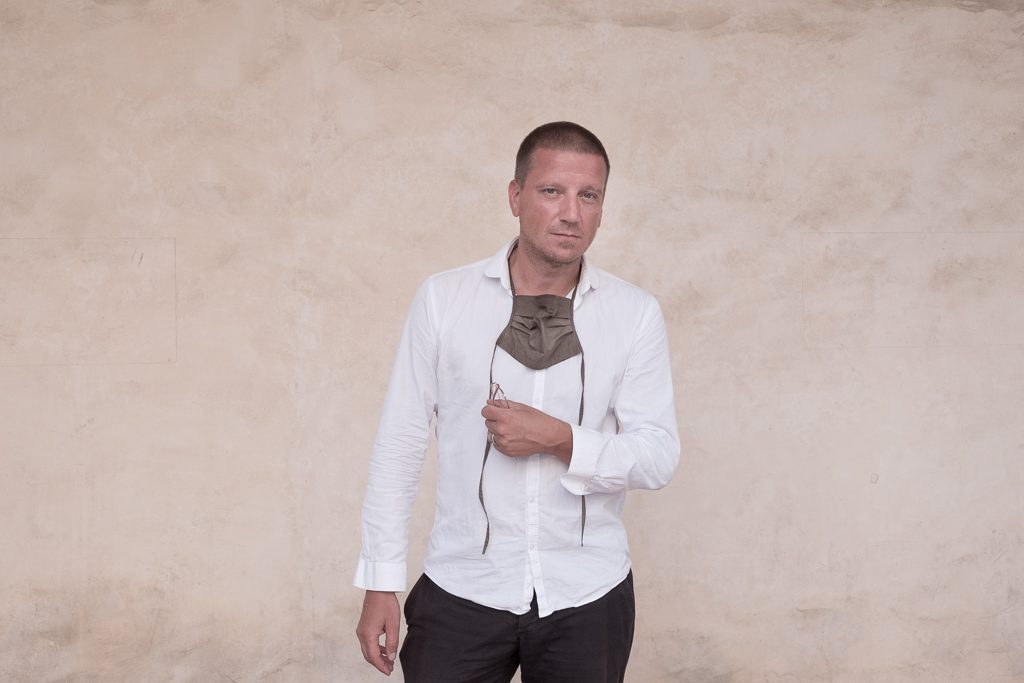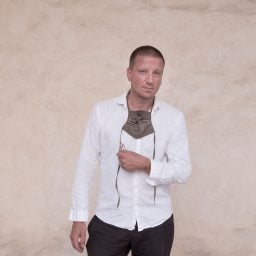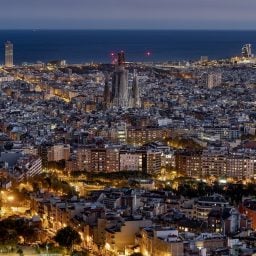Sited on the edge of the Mediterranean, the ancient port city of Marseille is attached by land to the mainland of Europe while it faces the Global South, to which it is deeply connected, on its horizon.
In Marseille, issues around trade, ecology, housing, and immigration stand on a knife’s edge, epitomizing some of the biggest challenges facing the world today. These were all central concerns for the three curators of Manifesta 13, even before the pandemic emerged to render them even more acute.
After an initial postponement from its planned June start, the main exhibition’s first chapter opened last week, August 28, without the typical stampede of international visitors, but to local audiences. Curated by Alya Sebti, director of Berlin’s ifa Gallery; Katerina Chuchalina, chief curator at the V-A-C Foundation in Moscow and Venice; and Stefan Kalmár, director of the ICA in London, the exhibition and accompanying programs were always meant to unfold in chapters and across various locations—a choice that became paramount to the show moving forward in the midst of the ongoing health crisis.
“We never thought of Manifesta 13 as a full stop, but always as a hyphen, or rather hyphens,” the curators wrote in a statement shared in June.
The central show, “Traits d’union.s,” unfurls across several overlapping metaphoric places: the refuge, the almshouse, the port, and the park. But first to be presented is a series of works around the concept of the home, a particularly vexed term in a year marked by lockdowns and rising xenophobia.
The biennial begins at a bourgeois 19th-century villa with an interior that has been intervened with contemporary artists and local activists. The entirety of Manifesta 13 will unfold across the city until October 9, when everything will finally be on view at the same time. Over 100 sites will be in use through the entirety of the exhibition.
We spoke with Kalmár, who is also a former resident of the city, about the challenges and opportunities presented by the current social and political climate.
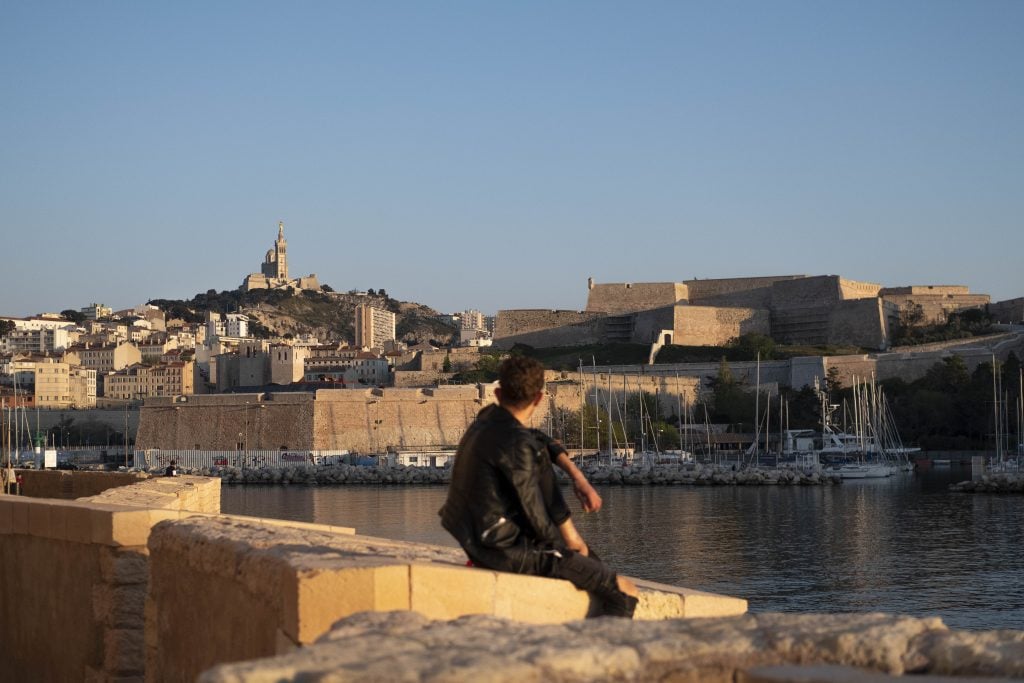
A view of Marseille.
What has it been like to curate this show in the middle of a pandemic?
We are the “pandemic biennial” [laughs]. Of course, I am happy we’re doing it for many reasons. Marseille is representative of so many of our global challenges. It’s a good moment in the history of the city. We saw a change of government three weeks ago for the first time in 25 years to a left-green coalition and its first female mayor ever. The last two years, the Manifesta team had worked as a somewhat undercover operation after being invited by a city government that probably had very different aspirations for a European biennial than we did. The hopes sometimes held by local officials are very different ones than what maybe an artistic team of a biennial wants to do. There is an element of criticality to which the former city government did not necessarily subscribed.
One of the exhibition’s first focuses is on the home. Can you explain how this came to be?
On November 5 2018, an inner-city building collapsed in Marseille and killed 8 people. It became representative of the decline of the city’s government at the time. A lot of these issues, in particular the ones surrounding the problem of housing in Marseille, were at stake while we were working here. So now [with this change of government], this exhibition which was working towards change is now a part of it and also a manifestation of that positive change and its possibilities.
How are you hoping to affect the city?
Even pre-pandemic, we always thought that, first and foremost, Manifesta 13 needs to speak to local audiences. Back then, we had always thought about opening it in chapters successively. Equally, the selection of venues also spoke to that, in terms of avoiding a form of poverty tourism or property scouting. At Manifesta 12 in Palermo, people often spoke more about the property prizes and the Palazzos than the art.
The shows will be unfolding across various institutions throughout the city over the next several months. Why did you choose to work with individual institutions specifically?
Our main question is what value and what role can institutions, as pillars of democracy, perform—particularly if those institutions are under threat from what are often conflicting points on the political spectrum.
We are working with differently charged institutions. For example, we are opened the first “plot” of the show, the “home,” at Musée Grobet-Labadié, an 19th-century home owned by a bourgeois family who donated the collection inside it to the city of Marseille. The question we are interested here is: whose collection and whose idea of representation are we looking at? [Visiting this museum] is a bit like window shopping. You look at essentially a world that you can’t afford and that you’re not part of. This is also a white world in a city that has a 60 to 70 percent immigrant population, and a bourgeois world that is beyond the reach of 99 percent of Marseille’s population.
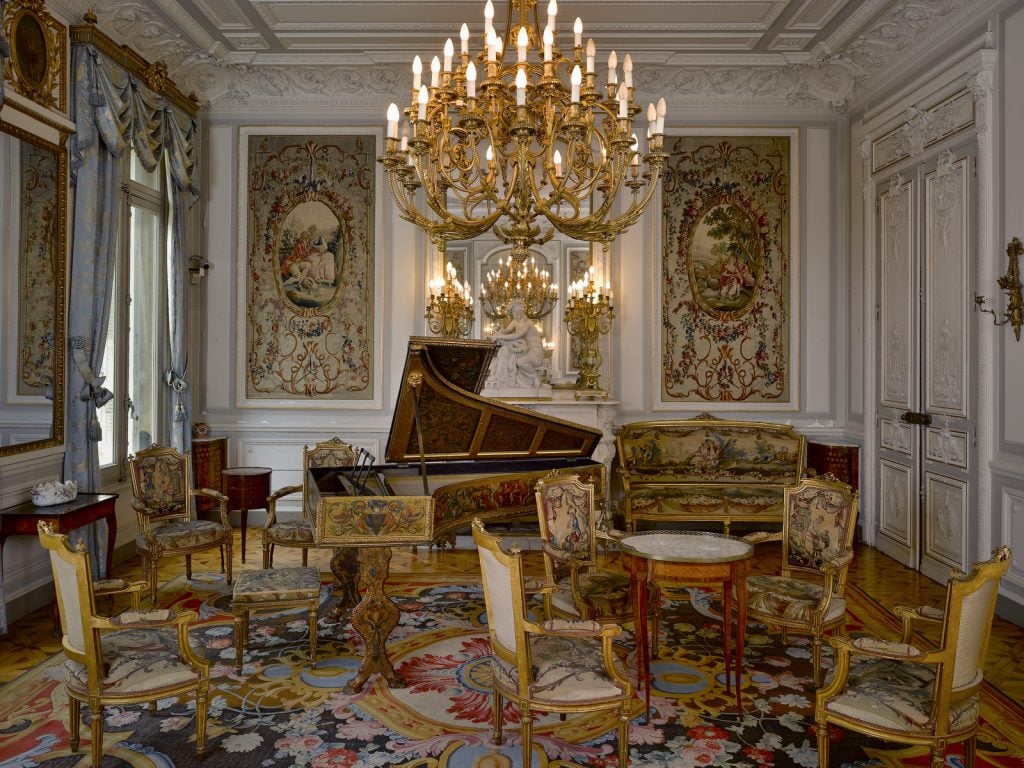
Grand Salon du Musée Grobet Labadié © Musées de Marseille. Photo: Bonnet Magellan.
Because Manifesta 13 was always supposed to be centered on local engagement, how important is it that the opening did not happen as originally planned, with the art world passing through in droves on preview days?
I find it really liberating. There will be successive openings until October 9 of the different “plots,” or as we call them, successive beginnings. Because of this, you avoid international tourism, which is not very possible at the moment anyways, but we also avoid it also because people will not travel to Marseille just to see one venue. The international audience can only see everything complete after October 9. Until then, the successive openings are for local audiences who are therefore the first ones to see everything.
Manifesta 13 engages with local activist groups and collectives that are engaged with some of the challenges Marseille faces. Could you give me an example of a pairing?
[Artist] Martine Derain is part of an activist group and has, over the years, documented the housing crisis in a neighborhood that is largely inhabited by immigrants. [Derain] traces a history of how France and many countries in postwar Europe welcomed immigrants as cheap labor and now, in a moment of scarcity, try to employ racism to essentially expel them through to mechanisms of gentrification.
Of course, this is something we’ve been highly aware of avoiding ourselves. The flip side of a biennial is contributing to rampant gentrification. We avoid actively contributing to this by not using disused buildings, but rather going right at the heart that makes the city, its institutions.
There is an ecological dimension to that as well. If the infrastructure is there, why wouldn’t you use it? The other question is, why do so many institutions—not only in Marseille but across the world—operate only for a very small fraction of the population? If go into any museums here, it is a predominantly white, middle-class audience. Why are more voices not represented within those contexts? So the question is: what does a civic institution of tomorrow look like, and how can we evolve our democracy?

“The Park: Becoming a Body of Water” opens at the Musée des Beaux arts Palais Longchamp on September 25. Photo: CMoirenc.
So how are you working against that with your programming?
For example, our colleagues in the educational program worked in the lead up to the openings with privately owned archives. There is, for example, an archive of queer sexuality that is privately owned, run in a little townhouse, and it has been collecting material since the 1950s. These kinds of archives were made visible in the lead-up to the main program and equally informed our process.
Then, simply by looking at the social archeology of those different institutions and introducing those institutions with different voices that are normally excluded, and revealing their inherent structure of inclusion and exclusion, we hope what is represented relates differently—maybe even better—to the real lived experiences of people in Marseille.
Representation alone cannot be enough anymore. There is a huge difference between saying the right thing and doing the right thing. If we want to dismantle structurally unjust conditions of which institutions are a part, we cannot do that merely representing those conditions. We also must call out some of the institutionalized lies. I think that that is the learning curve after the murder of George Floyd, combined with the pandemic, that has been revealed to all of us.
Why do we continue and not abandon ship in the time of a pandemic? Money could arguably be spent somewhere else, rather than on a biennial. But we felt that a lot of the issues we were discussing prior to the crisis have only been amplified through the crisis. In many ways, the crisis was already here. Everything then became more poignant or more visible and more apparent.
If everyone looks back at February 2020, we were all exhausted, right? We were feeding a machine that exhausted us all. In that scheme of exhaustion, as a byproduct of our global exhilarated economy, we created we created the virus that made us all stop. The virus is a great connector because it connects us all, which is also why the face mask has been so politicized. If you wear a mask, it’s also an act of solidarity with your neighbors. It’s interesting that [people in the] most aggressive neoliberal economies, namely the UK and the US, have such a problem with wearing them. They also have, consequently, higher fatality rate, which says how they value human life of the disenfranchised, the elderly, the sick.
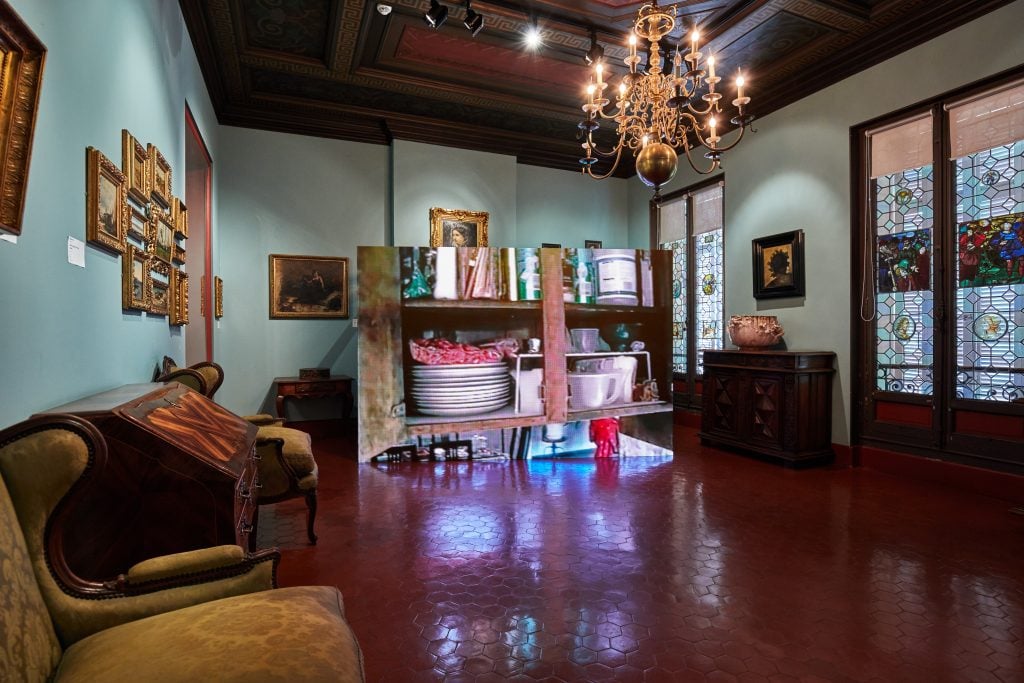
A Model Childhood (2018/ 2020) © Ken Okiishi. Photo: © Jeanchristophe Lett. Courtesy Manifesta.
Did any of the artists want to alter their works because the virus and the global issues that emerged in 2020?
Ken Okiishi, for example, offered a contribution about his experience as an Asian-American. He always found it so racist that people were laughing that he was wearing already a mask during travel prior to the pandemic.
Marc Camille Chaimowicz, who is of Polish descent and was raised in postwar France before he migrated to London in the mid-1970s, was supposed to have the entire Musée Cantini. But because Mark has emphysema and is in a high-risk group, since March he can only go alone in the streets at 5AM in his neighborhood. This would have been Marc’s biggest project in France for him to date, but it could not be realized. Instead, he now made a work about not being able to participate, as well as a historical work that has been reframed. It is called Here and There. It asks what constitutes here and what constitutes there.
If Palermo was about coexistence, then the question here is not only how can we coexist but how can we build new forms of relationships and a new sense of community. How can we rediscover what unites us? A pandemic is quite a contributing aspect to rethink what brings us together, and what mutual care, and responsibility means and might look like.
Can you walk me through your personal highlights of the show?
There is for example, a work on view by Cameron Rowland that is a device that is used in America to surveil people that are on probation. For them, home has become most of their prison cell.
There is also the painting Radieuse by Jana Euler that was painted in Marseille. It depicts the Cité Radieuse, a housing project in Marseille by Le Corbusier, with two camels lying in front of the building. It alludes to the colonial aspects of modernism, which exploited the aesthetics of North African architecture and culture while using North Africa as a testing ground for building projects, etc.
Martine Darien is part of a collective who photographed the houses in Belsunce neigborhood. You have the old mansions holding treasures of the families’ art holdings, and a picture of a different social reality, a five minute walk away.
The Belsunce neighbourhood lies at the heart of Marseille, and many of its homes were constructed in the same century as the Musée Grobet-Labadié. In an attempt to ‘rejuvenate’ the district, the municipal government initiated a forced gentrification scheme the early 2000s, whereby many of the buildings were sold off to investment funds, leading to the mass eviction of their forms working-class tenants. These measures were met with fierce opposition by local activists, and today, most of the buildings remain empty:
We are also showing Oral Futures Booth by Black Quantum Futurism, a Philadelphia-based collective active in questions of social housing. They installed a booth where people can recall what home means to them. Across the house from there, they built a public stage to be used for local musicians and collectives as a quasi-Afrofuturist time machine. It questions the notion of linear time and how it conditions the perception of social realities as unchangeable.
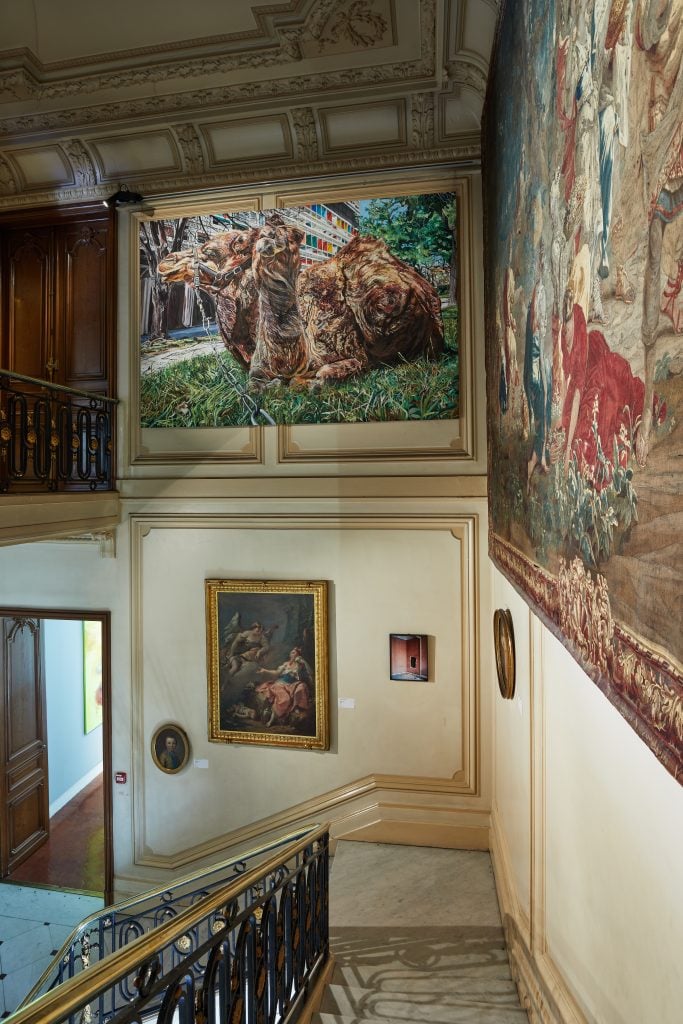
Radieuse (2016) © Jana Euler. Photo: © Jeanchristophe Lett/Manifesta.
Is there is the hope, like at Manifesta 12 in Palermo, to leave behind a legacy or a structure that can be self-sustaining?
I think it works on different levels. People that work in museums may learn that their institution could also be something else, and can evolve from what it currently is—that democracy and institutions are not something static.
There are different initiatives that run parallel to the exhibition, including the People’s Assembly, which includes a hundred people randomly drawn from the population to discuss issues that matter to the city. This initiative by Hedwig Fijen is the first time that Manifesta did something like this, but I think it is planned to continue in other cities.
Considering the political shifts that we just witness through this election, I think we can positively contribute to that and embrace a more civic approach to institutional politics. There are some really fortunate coincidences that I hope makes people in city politics, but also those people for whom these institutions were made for in the first place, see value in them and see that they can evolve, and that they can see themselves in them.
Manifesta 13 Marseille runs until November 29 at various locations.
